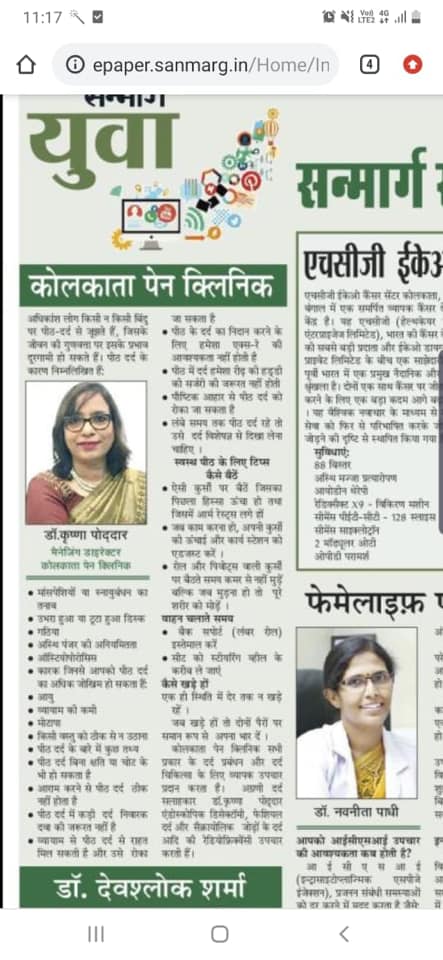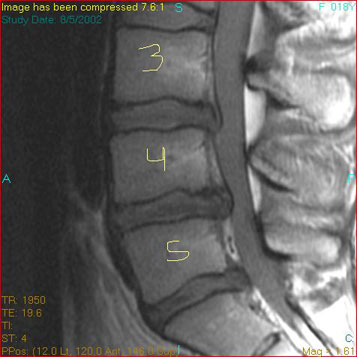

Patch it up
Transdermal patches can help in pain management. But there is not enough awareness about them in India, says Hemchhaya De.
You have heard of nicotine patches — those Band Aid-like strips that help people quit smoking. But those are just one variety of what is broadly known as transdermal patches. The latter play a crucial role in pain management in several parts of the world. But in India, doctors say, awareness of the use of transdermal patches in relieving pain is abysmally low. What’s more, these are not widely available in the country.
have heard of nicotine patches — those Band Aid-like strips that help people quit smoking. But those are just one variety of what is broadly known as transdermal patches. The latter play a crucial role in pain management in several parts of the world. But in India, doctors say, awareness of the use of transdermal patches in relieving pain is abysmally low. What’s more, these are not widely available in the country.
“Indian companies started manufacturing these patches only half a decade ago. But awareness is still quite low,” says Dr G.P. Dureja, director, Delhi Pain Management Centre, who started pain management services at Delhi’s All India Institute of Medical Sciences in 1986.
Agrees Sanjay Singh, business unit head, Sparsha Pharma, one of the few drug companies in the country manufacturing patches, “There is a huge demand for transdermal patches in therapeutic areas like cancer, asthma and Alzheimer’s. Unfortunately, there is not much awareness in India with regard to transdermal application of drugs.”
Dr Dureja adds that pain is considered a major health problem all over the world. “About 80 per cent of the patients visiting any hospital or doctor have pain as their major complaint. It can be severe and can damage the nervous system.” Furthermore, chronic pain affects approximately 30 per cent of the adult Indian population, especially women and the elderly. Doctors stress that this is where transdermal patches — adhesive skin patches that are used to deliver drugs through the skin and into the bloodstream — can make a world of difference.
“These patches can be considered a saviour for cancer patients who suffer from chronic pain and often find it difficult to take pain killers orally or through injections,” says Dr Krishna Poddar, a senior consultant with the pain clinic at Fortis Hospitals, Calcutta. According to a Delhi Pain Management Centre estimate, around six million cancer patients suffer pain globally and for most of these patients, pain is not satisfactorily relieved.
Transdermal patches can come in handy for chronic pain associated with other kinds of physical conditions as well — chronic lower back pain, joint pains, chronic headaches, neuralgias and muscle pains, to name a few.
“Patches can be extremely effective after neurosurgery — like when we are splitting open the spine or the brain and this is associated with acute pain,” says Dr Sunandan Basu, a Calcutta-based neurosurgeon. “These patches release drug molecules into the body that have an effect on nerve endings which in turn relieve pain.”
Medical experts say that transdermal patches have several advantages over conventional painkillers, which often have harmful side effects. To begin with, the patches are non-invasive, painless and user-friendly. “A transdermal patch releases drugs into your body and works in a sustained manner. It can be applied on any part of the body — works for fixed hours and they can be reapplied. Besides, you don’t need a doctor or a nurse to put the patches on you,” says Dr Poddar, who is also the state secretary of the Indian Society for Study of Pain (ISSP).
These therapeutic patches are generally available in capacities ranging from 1.25mg to 10mg, where drugs are delivered into the bloodstream at a calibrated and controlled rate (12.5 to 100 micrgrams per hour). “In India, two or three generic drugs are available in patches — these include fentanyl (an opium-based painkiller normally delivered slowly through skin patches), which works for 72 hours, and buprenorphine, which is analogous to morphine,” says Dr Poddar.
“Diclofenac patches — non-steroidal anti-inflammatory patches — are also available in India,” adds Dr Basu.
Several Indian pharmaceutical companies like Dr Reddy’s and Sparsha Pharma are now manufacturing patches following international guidelines. For instance, Sparsha offers a few popular varieties — Fentanyl Transdermal Patches, which are used in the management of moderate to chronic pain, Diclofenac Transdermal Patches (for topical pain in muscles, tendon, etc) and Ketoprofen Patches (for topical pain and rheumatoid arthritis). “Our production facility was established as per the US GMP (Good Manufacturing Practice) guidelines and crucial production equipment imported from the US and Japan in order to achieve global quality and efficacy,” says Singh of Sparsha Pharma. “Our Fentanyl Transdermal Patches are certified by WHO.”
But medical experts say there are several hurdles to making transdermal patches easily available to patients across the country. “Unlike the West, the use of transdermal products in daily practice is not mentioned in the curriculum of medical practitioners in our country,” says Singh.
“We face a lot of problems in getting fentanyl patches,” says Dr Basu. “Doctors should be allowed to prescribe them freely, instead of having to ask pharmacists to get them from manufacturers through layers of red tape.”
He further says that in countries like the UK, patches are abundantly available. “The NHS (National Health Service) makes nicotine patches widely available to people because it has calculated that by controlling smoking, it can reduce the disease burden and save itself millions in healthcare. Our government can think on similar lines.”
Transdermal patches, like morphine, are treated as narcotic substances and subjected to laws like the NDPS (Narcotic Drugs and Psychotropic Substances) Act. As such, manufacturers and distributors need licences from the drug-controlling authorities to sell their products. “We have been requesting drug controllers to understand the importance of transdermal patches in offering relief from pain. But they hardly realise it,” says Dr Dureja. “The regulations in India with regard to patches need to be relaxed a bit so that a wider section of people can access the patches.”
Dr Poddar says that the West Bengal drug-controlling authorities are more rigid than their counterparts elsewhere in the country. “The ISSP has told state drug controllers to make more consumer-friendly rules with regard to patches,” she says. “Pharmacists and manufacturers find it difficult to renew licences for patches every month. States like Maharashtra are more lenient to manufacturers.”
Apparently, the authorities in India are worried about the misuse of patches. “They fear that people can get addicted to medicated patches. This is really a myth,” says Dr Dureja.
If administered in proper doses, transdermal patches show no adverse effects. “But if there’s an overdose, these can be life-threatening,” adds Dr Dureja.

PERCUTANEOUS HYDRODISCECTOMY
- 57 yrs. old patient c/o severe back pain with Rt radicular pain since 2 months
 Pain increased since 1 week
Pain increased since 1 week- Under went all conservative treatment like,medicines ,bedrest, and physiotherapy
- He was not able to stand and walk
- MRI showed L4-L5 disc prolapse with rt L5 nerve compression
- Percutaneous Hydrodiscectomy done in OT with live fluoroscopy under local anaesthesia , Percutaneous hydro discectomy is one of the newer techniques using high velocity water to pulverize tissue and remove disc material to relieve pain caused by contained disc herniation
- Advantages are -Success rate 80%,
- No cut, scar
- No epidural fibrosis,
- Stability of normal anatomical structure
- Hospital stay is less
- Less costly
- Early return to work
- Quick, safe
- Local anesthesia, outpatient procedure
- Improved quality of life
ADVANCED PAIN MANAGEMENT FOR MIGRAINE
52 Years old patient suffering with Migraine for 30 years .He tried many treatment with no benefit.Migraine was hampering his day to day life, not able to do his profession.Even he tried Botox injections 4-5 times giving him short term relief for 5-6 months.excessive use of Pain medicines affecting his kidney and liver and making him sleepy allthe day, When he came to us we did PNS (Peripherel Nerve Stimulater) trial .a fine wire lead was inserted under skin in subcutaneous plane under fluoroscopy guidance and connected to External stimulater.Trial was given for 7 days and then trial was removed,During trial pt was fine, no headache, had good sleep.
After one week of successful trial Permanent PNS installed,where Stimulating lead was connected to Permanent generater which was installed in pocket made under clavicle (neck bone)by small surgery,Pt was discharged next day, Now pt is very happy ,no hedache, he has own control over his pain.No medications and good quality of life.
Neuromodulation is advance pain management modality which prevent pain signals to reach brain.
ADVANCED PAIN MANAGEMENT FOR CANCER PAIN
It was historic day for Kolkata and Bellevue hospital as the first Morphine Pump Implantation was performed in a patient with severe intractable cancer pain. This is an advanced pain management therapy being used in developed country like USA for treating the pain and suffering of patient with intractable benign and cancer pain. who do not respond to any other treatment. This therapy involves implantation of a programmable pump in the bodt directly into the spinal cord & thus provides immediate and complete pain relief.
It was painful life for Mr S a 67 years old industrialist till he heard of a Specialist in Pain Medicine Dr Krishna Poddar. Dr Poddar initially blocked the nerves in the spinal cord giving 100% pain relief to Mr S. Because the pain was a result of a slow going tumor in the lung, the pain returned back after 6 months of total pain free period. This time Dr Poddar planned to implant a Morphine pump a programmable device meant to deliver pain drug directly into the spinal cord. Mr S suffering in pain is now a satisfied man with no pain resulting into good Quality of life.
